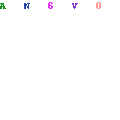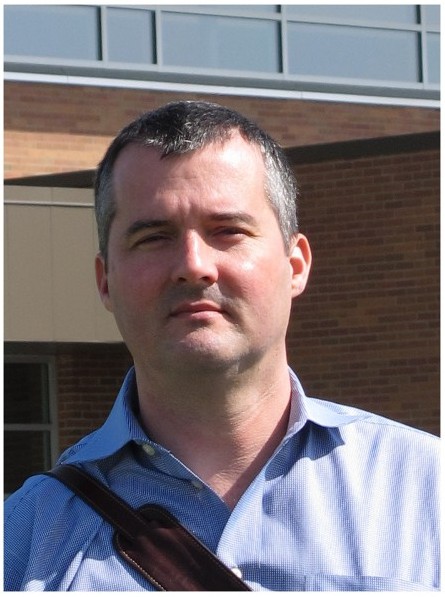Leaving the company you founded is always a tough decision and a tough process that involves many people. It requires a series of potentially emotional "crucial-conversations." It is actually not that uncommon in venture-backed companies for one or more of the original founders to leave at some point. There is a decent article on the topic here: https://hbswk.hbs.edu/item/the-founding-ceos-dilemma-stay-or-go.
Still it is extremely difficult to let go. You live and breathe the company you start. Years of working to connect as many people as possible to the dream gives you a feeling of "ownership" and connection that no stock certificate can replace. Starting a company is a lot of work. It takes a lot of effort. There are many decisions to make and many voices to incorporate. Hiring, firing, raising money, engaging customers, engaging employees, planning projects, organizing events, and aligning a pastiche of personalities while staying relevant in a rapidly evolving technology jungle is difficult.
As a founder over 40 with modest means, I had a family of 6 children who relied on me. That family had teenage children who needed my attention and pre-school and elementary-school children that I could not simply leave only in the hands of my wife. I look back and sometimes wonder how we pulled it off. The truth probably lies in the time we borrowed: time from exercise, time from sleep, time from vacations, and time from family. I'd like to say that this dissonance against "work-life-harmony" was always a bad choice, but honestly, I don't see how I could have made too may different choices and still have created Anaconda.
Several things drove me. I could not let the people associated with the company down. I would not lose the money for those that invested in us. I could not let down the people who worked their tail off to build manage, document, market, and sell the technology and products that we produced. Furthermore, I would not let the community of customers and users down that had enabled us to continue to thrive.
The only way you succeed as a founder is through your customers being served by the efforts of those who surround you. It is only the efforts of the talented people who joined us in our journey that has allowed Anaconda to succeed so far. It is critical to stay focused on what is in the best interests of those people.
Permit me to use the name Continuum to describe the angel-funded and bootstrapped early-stage company that Peter and I founded in 2012 and Anaconda to describe the venture-backed company that Continuum became (This company we called Continuum 2.0 internally that really got started in the summer of 2015 after we raised the first tranche of $22 million from VCs.)
Back in 2012, Peter and I knew a few things: 1) we had to connect Python to the Big Data movement; 2) we needed to help the scientific programmer, or a data-scientist developer build visualization-based applications quickly in the web; and 3) we needed to scale the stack of code around the PyData community to bigger hardware and multiple machines. We had big visions of an interconnected data-web, distributed schedulers, and data-structures that traversed the internet which could be analyzed across the cloud with simple Python scripts. We talked and talked about these things and grew misty-eyed in our enthusiasm for the potential of what was possible if we just built the right technology and sold just the right product to fund it.
We knew that we wanted to build a product-company -- though we didn't know exactly what those products would be at the outset. We had some ideas, only portions of which actually worked out. I knew how to run a consulting and training company around Python and open-source. Because of this, I felt comfortable raising money from family members. While consulting companies are not "high-growth" they can make real returns for investors. I was pretty confident that I would not lose their money.
We raised $2.25million from a few dozen investors consisting of Peter's family, my family, and a host of third-parties from our mutual networks. Peter's family was critical to this early stage because they basically "led the early round" and ensured that we could get off the ground. After they put their money in the bank, we could finish raising the rest of the seed round which took about 6 months to finish.
It is interesting (and somewhat embarrassing and so not detailed here) to go back and look at what products we thought we would be making. Some of the technologies we ended up building (like Excel integration, Numba, Bokeh, and Dask) were reflected in those early product dreams. However, the real products and commercial success that Anaconda has had so far are only a vague resemblance to what we thought we would do.
Building a Python distribution was the last thing on our minds. I had been building Python distributions since I released SciPy in 2001. As I have often repeated, SciPy was actually the first Python distribution masquerading as a library. The single biggest effort in releasing SciPy was building the binary installers and making sure everything compiled well. With Fortran compilers still more scarce than they should be, it can still be difficult to compile and build SciPy.
Fortunately, with conda, conda-forge, and Anaconda, along with the emergence of wheels, almost nobody needs to build SciPy anymore. It is so easy today to get started with a data-science project and get all the software you need to do amazing work fast. You still have to work to maintain your dependencies and keep that workflow reproducible. But, I'm so happy that Anaconda makes that relatively straightforward today.
This was only possible because General Catalyst and BuildGroup joined us in the journey in the spring of 2015 to really grow the Anaconda story. Their investment allowed us to 1) convert to a serious product-company from a bootstrapped consulting company with a few small products and 2) continue to invest heavily in conda, conda-forge, and Anaconda.
There is nothing like real-world experience as a teacher, and the challenge of converting to a serious product company was a tremendous experience that taught me a great deal. I'm grateful to all the people who brought their best to the company and taught me everyday. It was a privilege and an honor to be a part of their success. I am grateful for their patience with me as my "learning experiences" often led to real struggles for them.
There are many lasting learnings that I look forward to applying in future endeavors. The one that deserves mention in this post, however, is that building enterprise software that helps open-source communities should be done by selling a complementary product to the open-source. The "open-core" model does not work as well. I'm a firm believer that there will always be software to sell, but infrastructure should be and will be open-source --- sustained vibrantly from the companies that depend on it. Joel Spolsky has written about complementary products before. You should read his exposition.
Early on at Anaconda, Peter and I decided to be a board-led company. This board which includes Peter and I has the final say in company leadership and made the important decision to transition Anaconda from being founder-led to being led by a more experienced CEO. After this transition and through multiple conversations over many months we all concluded that the best course of action that would maximize my energy and passion while also allowing Anaconda to focus on its next chapter would be for me to spin-out of Anaconda and start a new services and open-source company where I could pursue a broader mission.
This new company is Quansight (short for Quantitative Insight). Our place-holder homepage is at http://www.quansight.com and we are @quansightai on Twitter. I'm excited to tell you more about the company in future blog-posts and announcements. A few paragraphs will suffice for now.
Our overall mission is to develop people, build technology, and discover products to empower people with knowledge and data to solve the world’s most challenging problems. We are doing that currently by connecting organizations sustainably with open source communities to solve their hardest problems by enabling teams to transparently apply science to their data.
One of the things we are doing is to help companies get started with AI and ML by applying the entire PyData stack to the fundamental data organization, data visualization, and model management problem that is required for practical success with ML and AI in business. We also help companies generally improve their data-science practice by leveraging all the power of the Python, PyData, and related ecoystems.
We are also hard at work on the sustainability problem by continuing the tradition we started at Continuum Analytics of building successful and sustainable open-source "practices" that synchronize company needs with open-source technology development. We have some innovative business approaches to this that we will be announcing in the coming weeks and months.
I'm excited that we have several devs working hard to help bring JupyterLab to 1.0 this year along with a vibrant community. There are many exciting extensions to this remarkable platform that remain to be written.
We also expect to continue to contribute to the PyViz activities that continue to explode in the Python ecosystem as visualization is a critical first step to understanding and using any data you care about.
Finally, Stefan Krah has joined us at Quansight. Stefan is an award-winning Python core developer who has been steadily working over the past 18 months on a small but powerful collection of projects collectively called Plures. These will be more broadly available in the next few months and published under the xnd brand. Xnd is a generic container concept in C with a Python binding that together with its siblings ndtypes and gumath allows building flexible array-computing pipelines over many kinds of data-types.
This technology will serve to underly any array-computing framework and be a glue between machine-learning and data-science frameworks of all kinds. Our plan is to use this tool to help reduce the data and computational silos that currently exist across the open-source ecosystem.
There is still much to work on and many more technologies to emerge. It's an exciting time to work in machine learning, data-science, and scientific computing. I'm thrilled that I continue to get the opportunity to be part of it. Let me know if you'd like to be a part of our journey.

















